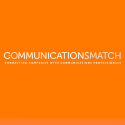Crisis Communications Measurement: Metrics That Matter
The definition of judgment is opinion or decisions based on careful thought.
Judgment matters in a crisis. It requires evaluating the potential impact of a crisis on a company’s brand, predicting where the story may go and how to respond.
In the digital landscape, decisions about how to respond need to be made quickly. While experience is an invaluable resource when it comes to deciding what to do under pressure, as black swan events remind us, the past is not always the best predictor of the future.

Having real time or as close as possible to real time data to make informed decisions, is invaluable and now increasingly possible. The question is what do you measure and what do these metrics tell us?
Media Metrics
Media monitoring and measurement tools are clearly essential in a crisis situation. Media coverage remains the most obvious barometer of a crisis. Although the usual metrics of success for media campaigns can be applied in reverse - the bigger the publication or news channel to cover the story, the greater the likely impact and reach – measuring only media coverage is to see the situation in one dimension.
Having been on the wrong-end of national TV coverage, I’ve seen first-hand that media must be viewed in the context of clients’ responses and other metrics. In the same way a positive story in The Wall Street Journal can lead to little or no client engagement, a single negative story may have surprisingly little impact for large companies with resilient brands. The measure of whether a story has legs and will have lasting damage will be reflected in how it resonates across audiences and the communications channels they use.
Social Media
It is natural for management to have a visceral response to social media and to want to reflexively respond. But it is critical to determine if the “chatter” matters and how a response is likely to be received before engaging. This decision needs to be informed by the level of existing engagement a company has in social media. The potential risk of alienating influencers or opportunity to turn this audience into advocates must be weighed.
For digitally-native communicators, measuring volume and understanding trending conversations, as well as who is posting using social analytics tools should be normal course of business.
But, for many companies not used to being in the glare of social media, putting social posts in context isn’t straightforward. When it comes to metrics, volume is corollary of traction, but it’s more important to see through the noise to determine how clients or influencers are reacting to a crisis by tracking and reading what they are saying.
Website Metrics

Measuring traffic to your website and comments received during a crisis is another important way to determine if coverage is resonating with audiences. How many people are visiting the landing page or newsroom are measures of engagement. For large companies with integrated communications teams this should again be a reflex, but sharing information across various departments in real time to make informed decision can be a challenge.
Although all businesses should be measuring visitor volume, it’s not always the case, especially for smaller businesses. Either way, the ebbs and flows of visitors are a proxy for audience activation – whether they care enough to do something.
Business Metrics
Of all the measures companies need to focus on, the response of clients to a crisis is ultimately the most important. The feedback sales teams receive in terms of calls or emails provides the most direct line of sight into the potential ongoing bottom line impact of a crisis.
Depending upon the type of business, customers may be the most sophisticated audience and the best positioned to filter out the noise they are hearing. If they are asking questions, you’ll have a clear benchmark for the scale of the problem you may be dealing with. For consumer products, client engagement may be measured simply in the decision not to purchase a product, so real-time sales tracking is key.
The takeaway here is that measures must be tailored for the type of business and engagement.
Client/Audience Research
In a crisis, most communicators are unlikely to be thinking about research because the expectation is that audience surveys take a long time to execute and will likely cost a great deal. Companies may also be concerned that conducting research could increase awareness of the crisis.
Well-established audience panels representative of the general population and the type of artificial intelligence-driven tools to analyze results and produce reports used by Researchscape in our Next Day Crisis & Opinion Survey tool – change the research equation. These tools allow companies to move from fielding a survey to a research report in 24 hours cost-effectively. These new capabilities bring surveys into the picture as an additional crisis metric to better understand how audiences are responding to messages. As with any research, questions can be asked in ways that address the issues without necessarily fanning the flames.
The various metrics available to corporate communications and crisis communications professionals offer an increasingly detailed and real-time assessment of how a crisis is playing out and how messages are resonating, enabling a more effective response.
The key is not to look at them in isolation, but as data points for an integrated holistic picture of the impact of a crisis on a company’s brand.
Judgment will still be required to determine responses, but with these measurement tools the opportunity is for it to be better informed and responsive to change as a situation evolves.
Simon Erskine Locke, Founder & CEO of CommunicationsMatchTM
CommunicationsMatch offers communications & PR agency search tools and resources that help companies find, shortlist and engage communications agencies, consultants and freelancers by industry and communications expertise, location and size. The site has 5,000 agency and professional profiles in areas including: crisis communications, public relations, internal communications, government affairs, investor relations, content marketing, social media, SEO, website development, photography and video. ComunicationsMatch launched it’s new Next Day Crisis & Opinion Survey tool with Researchscape in December.
Prior to founding CommunicationsMatch, Locke held senior corporate communications roles at Prudential Financial, Morgan Stanley and Deutsche Bank and founded communications consultancies.
